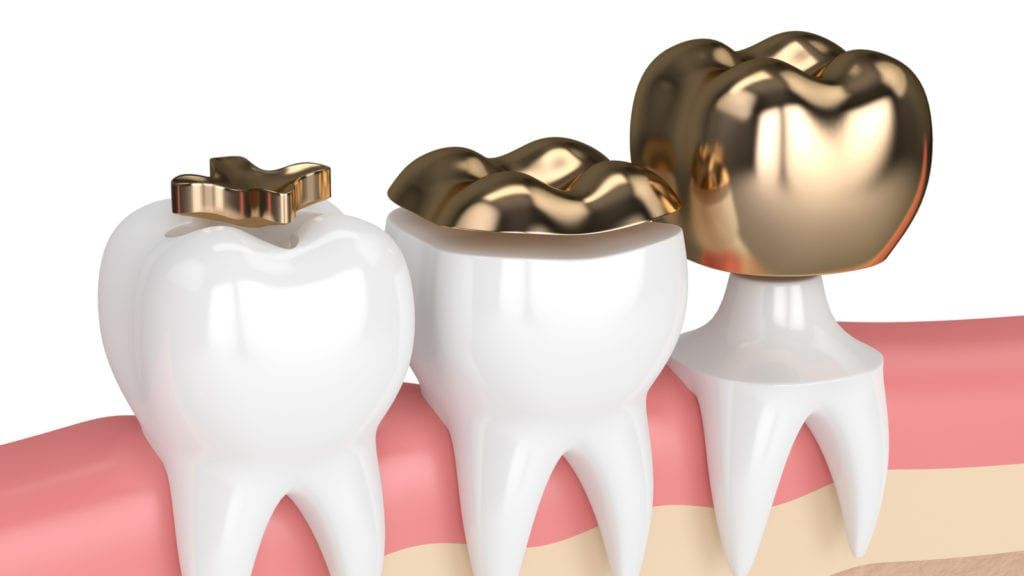In the land of dental restorations and repairs, fillings are among the most common methods that everyone has heard of. When damage from trauma or decay gets too severe, the most common solution before the tooth is lost is a crown, which replaces the majority of the visible tooth. These were once the only two options available to those seeking dental restoration, but Inlays and Onlays broaden the field. Before we can explain these restorations, we have to talk a bit about the general structure of the teeth.
The Composition of Your Teeth
While most of us know about enamel, it’s just the outer coating on our teeth. As the hardest substance in the body, it does a great job protecting the rest of the tooth. Beneath that sturdy white layer is a porous dentin layer, a softer and more sensitive layer that stands between the enamel and the pulp. The outside of the tooth is also divided into sections, the most visible portion being the crown. On the top of the crown are raised areas that are used for crushing, grinding, and tearing. These areas are known as the cusps of your tooth.
What Inlays and Onlays Do Differently Than Crowns
The dental repair known as a crown requires removing a significant portion of your tooth’s material. This fact means it’s essentially serving as a cap on top of what’s left behind. In many cases, getting a crown would require the removal of healthy tissue, which is counter to your dentist’s ultimate goal. Inlays and onlays are less invasive restoration methods that are able to restore damage to the cusps or the space between the cusps. Inlays can be used to perform restorations on the sides of your teeth, but do not repair the cusps. Onlays are used to restore strength to your tooth and are used to repair the cusp and biting surfaces of your tooth.
What Makes Them Better Solutions Then Crowns or Amalgams?
One of the wonderful things about inlays and onlays is their ability to blend into your tooth’s remaining natural material. Unlike amalgams, which are starkly silver and impossible to miss, onlays and inlays are carefully tinted to match your natural tooth color. While crowns share this ability, they also replace a significant portion of your tooth’s material, often more than is strictly necessary for the repair work being done. Inlays and Onlays maintain more of your natural tooth and help boost its resiliency as a result.
If you’ve got questions about these restoration options and are wondering if they’re appropriate for your oral health concerns, contact Magnolia Dental today. Operating out of beautiful Covington, LA, our office serves the local community’s dental health needs with pride. Dr. Ross Quartano and his team of dental specialists are ready to accept new patients at their office! Make a call to our team today and schedule your appointment and get on the road to a beautifully restored smile with the dental experts at Magnolia Dental. We’re ready to welcome you to our dental family!


